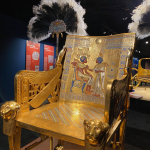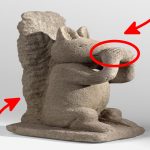Anubis: The Ancient Egyptian God of Mummification and Burial Rites

In the rich tapestry of ancient Egyptian mythology, Anubis stands out as one of the most significant and revered deities. Known primarily as the god of mummification and burial rites, Anubis played a crucial role in the journey of the soul to the afterlife. Often depicted with the head of a jackal and the body of a man, Anubis was believed to preside over the embalming process and guide the deceased through the underworld. This role is vividly illustrated in numerous ancient texts and artworks where Anubis is shown attending to a mummy, symbolizing his protective and purifying presence.
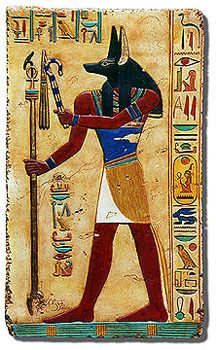
Anubis’s association with mummification is deeply rooted in Egyptian beliefs about death and the afterlife. The ancient Egyptians believed that preserving the body through mummification was essential for the soul’s survival in the afterlife. Anubis, as the patron deity of embalmers, was invoked to ensure that the intricate process of mummification was performed correctly. This process involved several stages, including the removal of internal organs, the drying of the body with natron, and the wrapping of the body in linen. Each step was accompanied by prayers and rituals to honor Anubis and seek his blessings.
One of the most iconic representations of Anubis is found in the “Opening of the Mouth” ceremony, a ritual performed to restore the senses of the deceased, allowing them to eat, drink, and speak in the afterlife. In many depictions of this ceremony, Anubis is shown presiding over the proceedings, often holding the tools used to open the mouth of the mummy. This imagery underscores his vital role in ensuring that the deceased could fully participate in the afterlife.
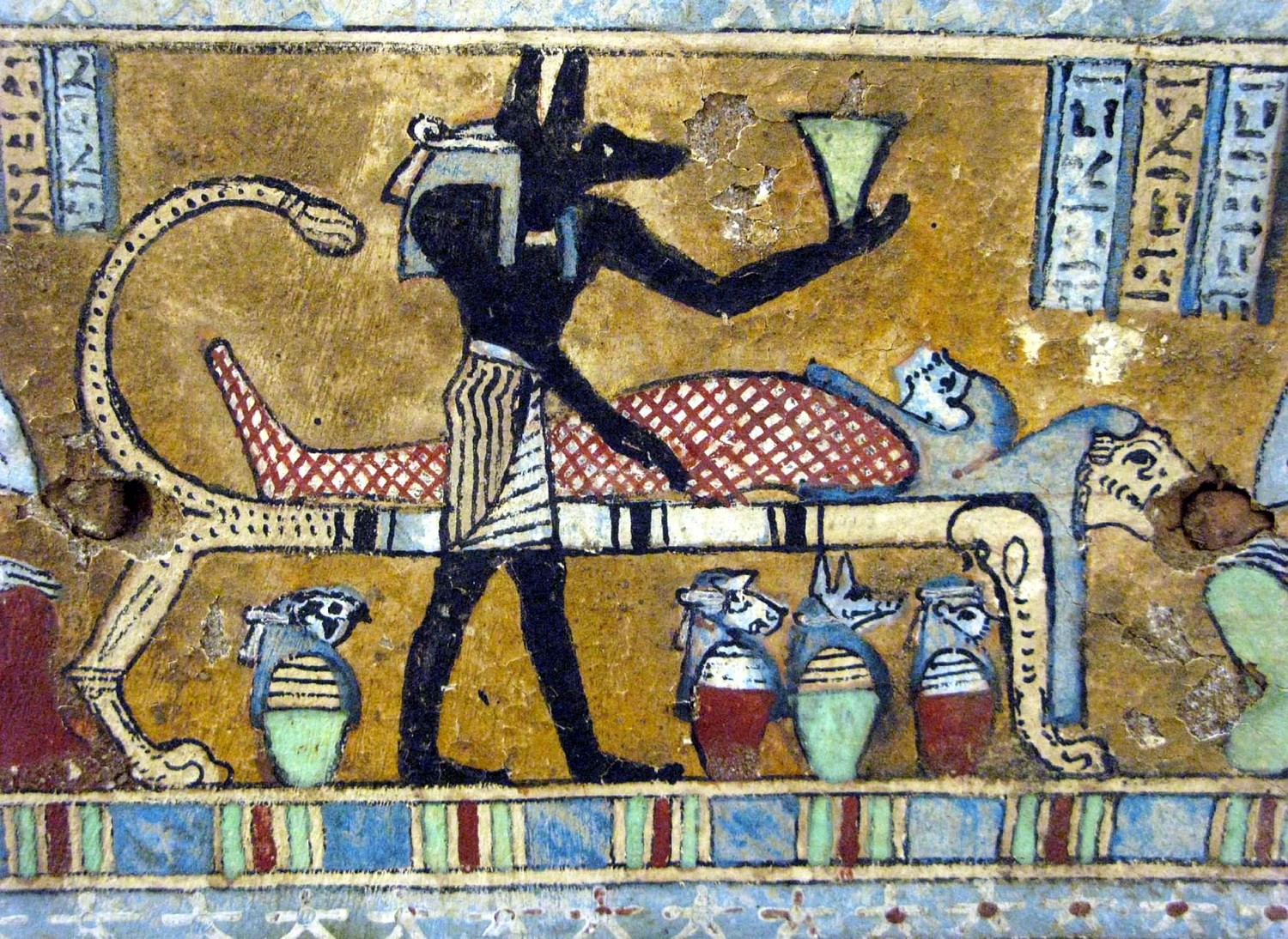
In addition to overseeing mummification, Anubis was also believed to protect the burial sites from desecration. Tombs and graves were often marked with the symbol of a jackal, representing Anubis, to ward off grave robbers and evil spirits. The presence of Anubis was thought to safeguard the resting place of the deceased, ensuring their peace and security in the afterlife. This protective role extended to the weighing of the heart ceremony, where Anubis was depicted guiding the soul to the scales of justice, presided over by Osiris, the god of the afterlife.
The weighing of the heart was a pivotal moment in the journey of the soul. It was believed that upon death, the heart of the deceased would be weighed against the feather of Ma’at, the goddess of truth and justice. If the heart was found to be lighter than the feather, the soul was deemed pure and granted access to the eternal afterlife. However, if the heart was heavier, it was devoured by Ammit, a fearsome deity with the head of a crocodile, the body of a lion, and the hindquarters of a hippopotamus. Anubis, as the guide of souls, was responsible for leading the deceased to this judgment and ensuring that the process was fair and just.
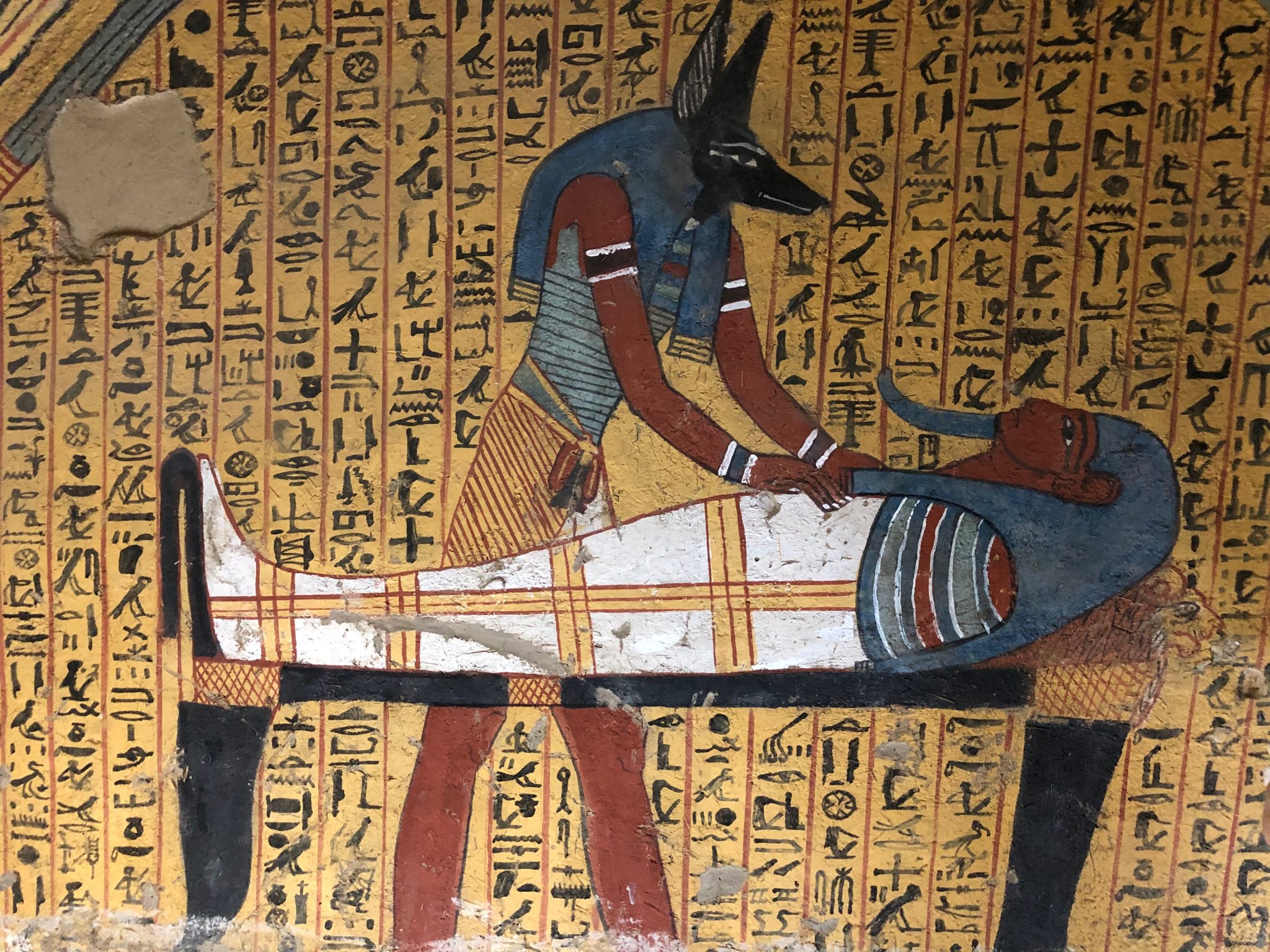
Anubis’s importance in ancient Egyptian religion is also reflected in his widespread veneration across different periods of Egyptian history. Temples and shrines dedicated to Anubis were established in various regions, where priests performed rituals and offered sacrifices to honor him. His image was commonly found in tombs, on amulets, and in funerary texts, serving as a constant reminder of his protective and guiding presence.
In conclusion, Anubis, the ancient Egyptian god of mummification and burial rites, was a central figure in the religious and cultural landscape of ancient Egypt. His role in overseeing the mummification process, protecting burial sites, and guiding souls through the afterlife highlights the profound significance attributed to him by the ancient Egyptians. Through his vigilant care and guidance, Anubis ensured that the deceased could embark on their journey to the afterlife with confidence and peace. The enduring legacy of Anubis is a testament to the ancient Egyptians’ deep reverence for the mysteries of death and the hope for eternal life.

